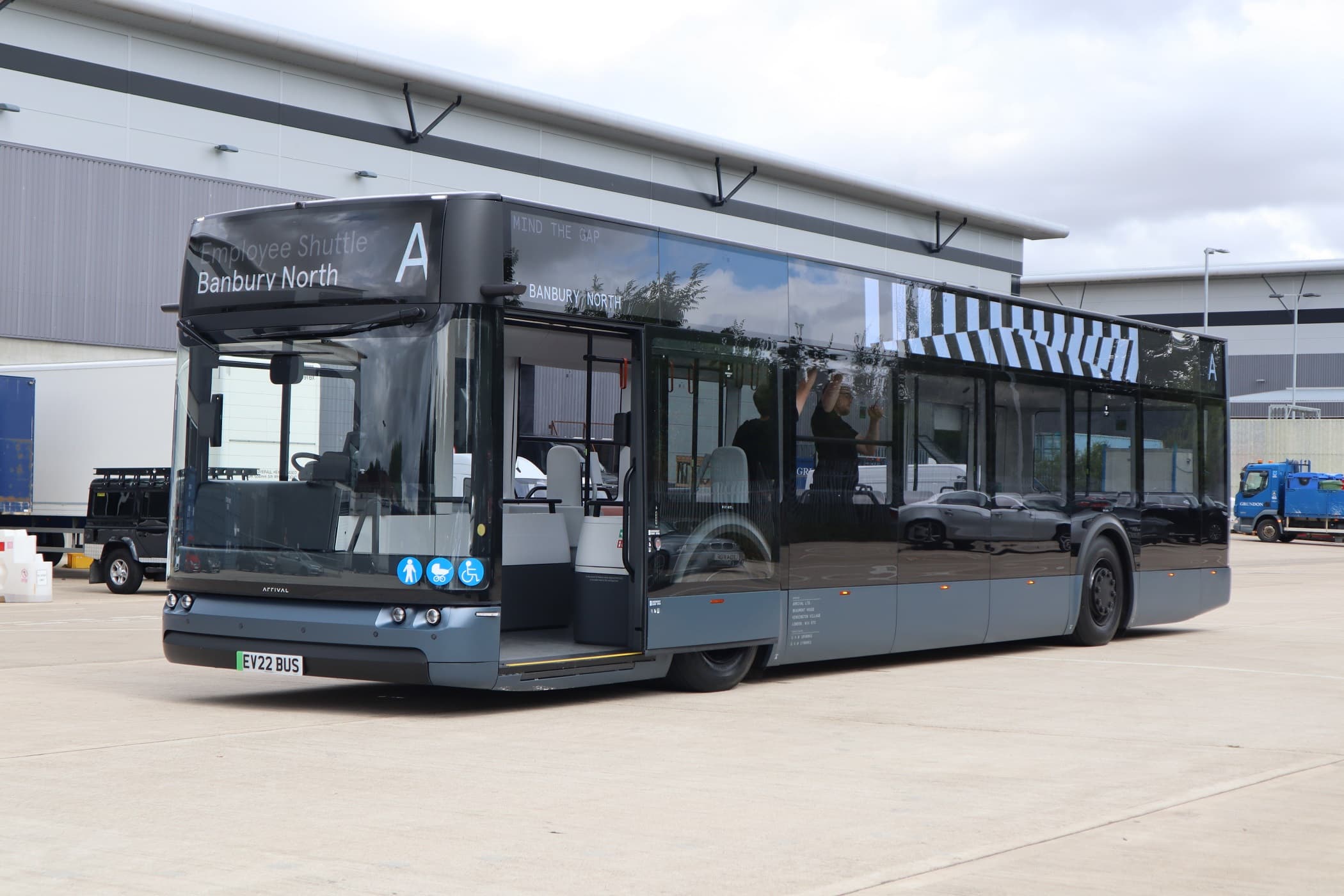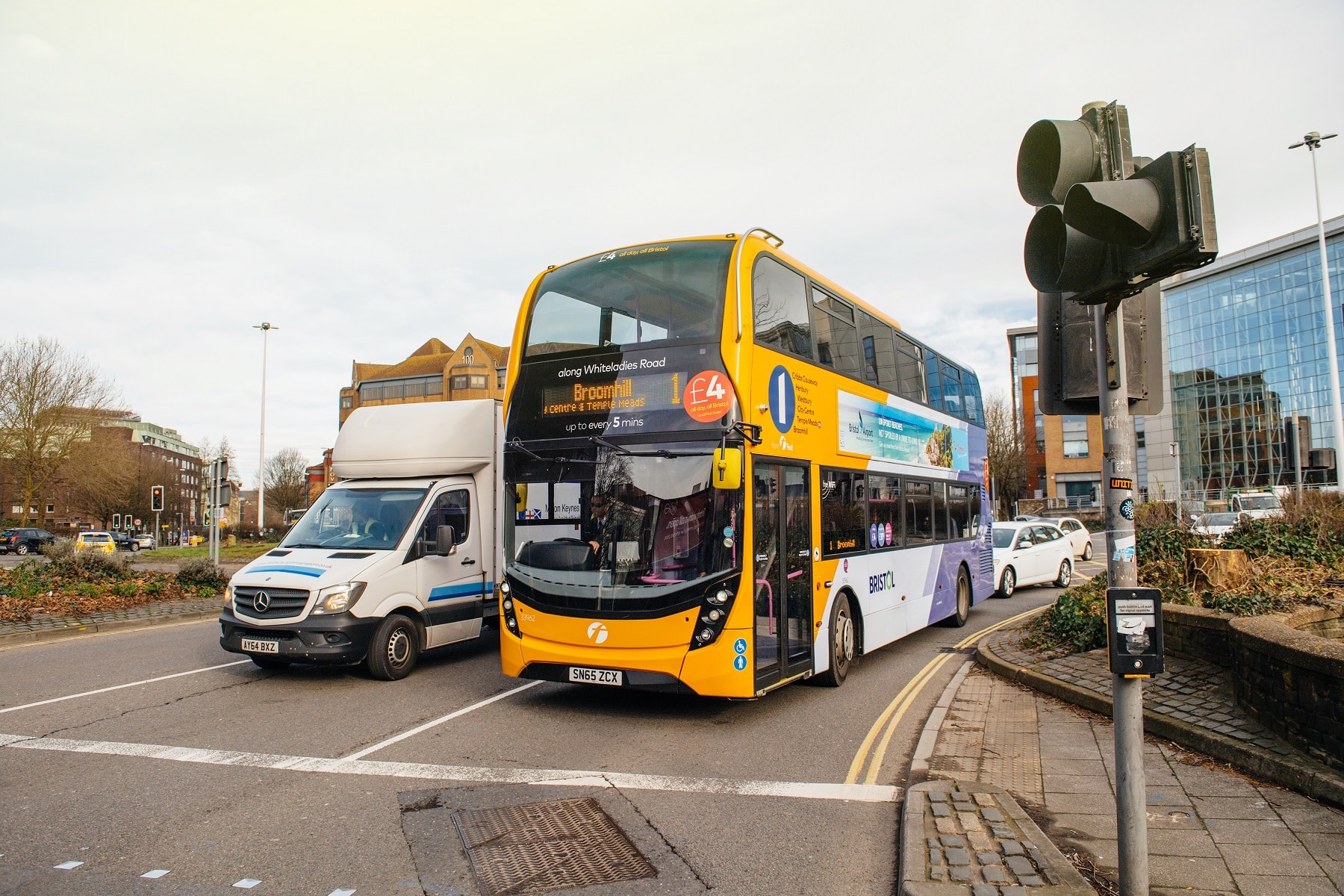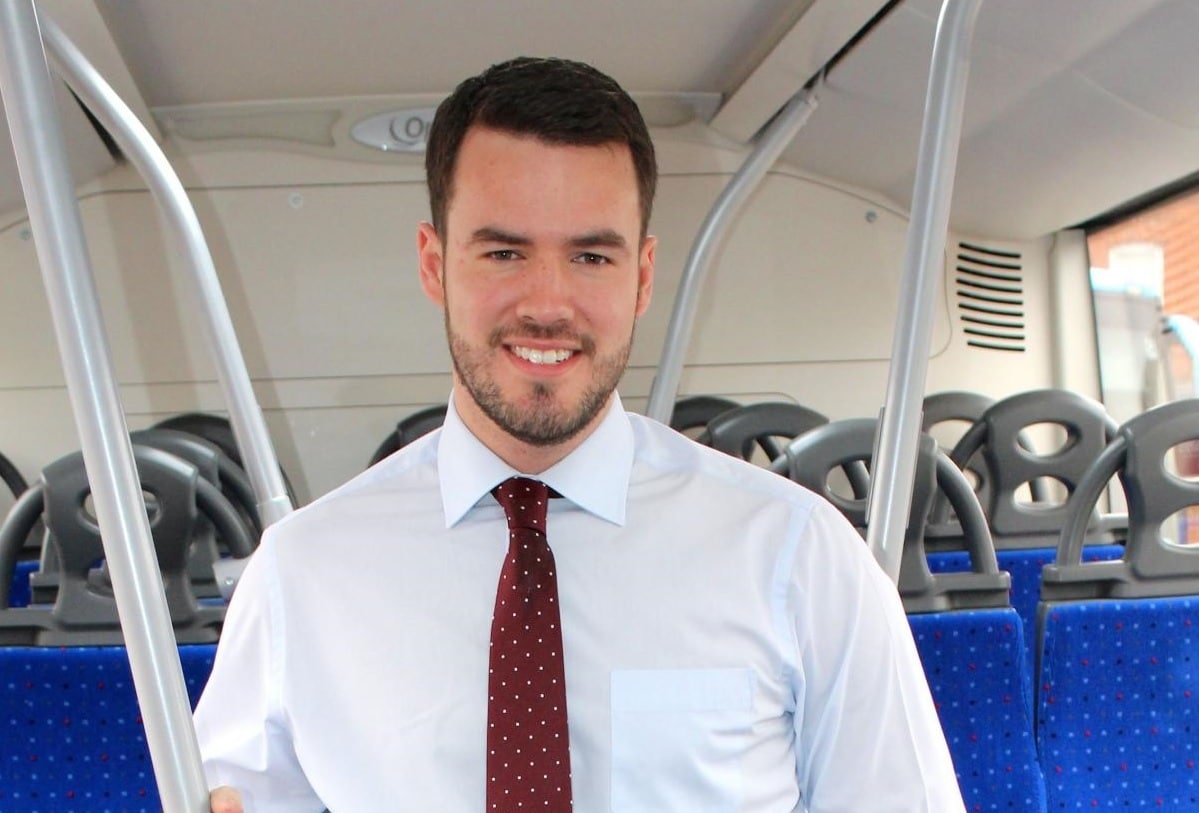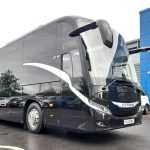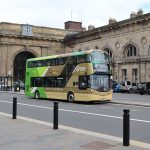Arrival has reaffirmed its commitment to the bus market despite the recent deferral of future investment in that sector. It comes as the Banbury manufacturer showed its battery-electric single-decker for the first time following recent certification.
The start-up OEM says it has designed its vehicles “using a blank sheet of paper,” and it has revealed that the approach utilised in the single-decker has the potential to lead to further models including a double-decker, an articulated bus and even a coach in the long term.
Arrival has also expanded on the thinking behind its ‘microfactory’ concept. It says that the design of its bus has been configured to allow decentralised and cost-effective production, with the potential to hold each module in stock to permit rapid assembly. Indeed, modularity and simplicity are at the heart of its approach, says Vice-President of Bus Platform Franck Dessenis.
Chairman Avinash Rugoobur notes that each component has been designed to allow easy handling by robots, and he adds that Arrival’s planned assembly methods will be a major contrast to those that are otherwise used in the bus industry.
“We thought: ‘What if we flipped that on its head and took a decentralised production approach?’ Hence our microfactory concept.” Avinash claims that the OEM will be able to take existing, modestly sized space and convert it into such a facility quickly, with potential for vehicles to be produced there within six to 12 months.
Three key parts to Arrival’s bus strategy
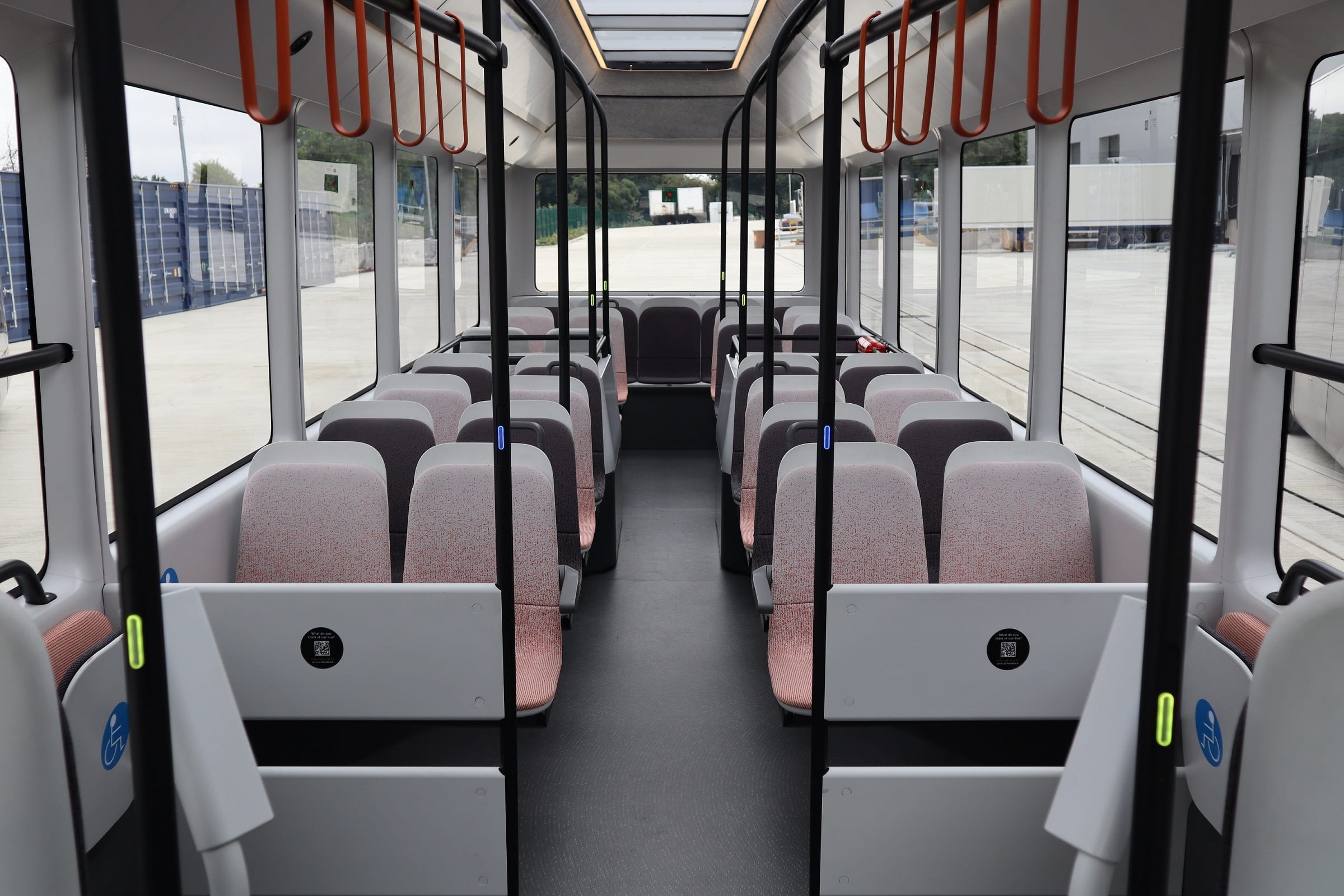
A straightforward production method is one of three keys to Arrival’s strategy, he continues.
Others are software and the vehicle. Avinash describes software as “critical” to the Arrival product and it will be common across the OEM’s range of vehicles.
Also shared are as many vehicle components as possible. Examination of the bus and Arrival’s van product – which is currently the company’s priority – shows that many common parts are used. Lights and elements of the cab area are examples, while under the skin, the basics of the vertically integrated battery-electric driveline are the same, albeit beefed up in the bus. The OEM claims that there is a 40% component commonality across the two models.
Arrival electric bus: Step change from the norm
Examination of the first road-registered Arrival bus shows that it is unlike any other in the UK. Arrival’s modular approach is evident when this 12m example is compared to the shorter, 10.5m variants that form part of the OEM’s testing and development fleet. Arrival has thus far produced 12 buses, including the one that is currently engaged in shuttling staff between sites in Banbury.
The 10.5m examples differ from those that are 12m long by only one obvious marker: They are missing one of the manufacturer’s 1.5m modules amidships. That modular approach will allow the production of a 13.5m variant easily. Remarkably, Arrival is confident via modelling that such a length will be achievable on two axles.
All batteries and many other components are mounted within the aluminium chassis. Hub motors are fitted to the drive axle. As a result, the bus is entirely low floor from front to rear, although it thus comes with significant unavoidable intrusion from the rear wheels. That aside, the seating layout is good and twin wheelchair and buggy spaces are provided.
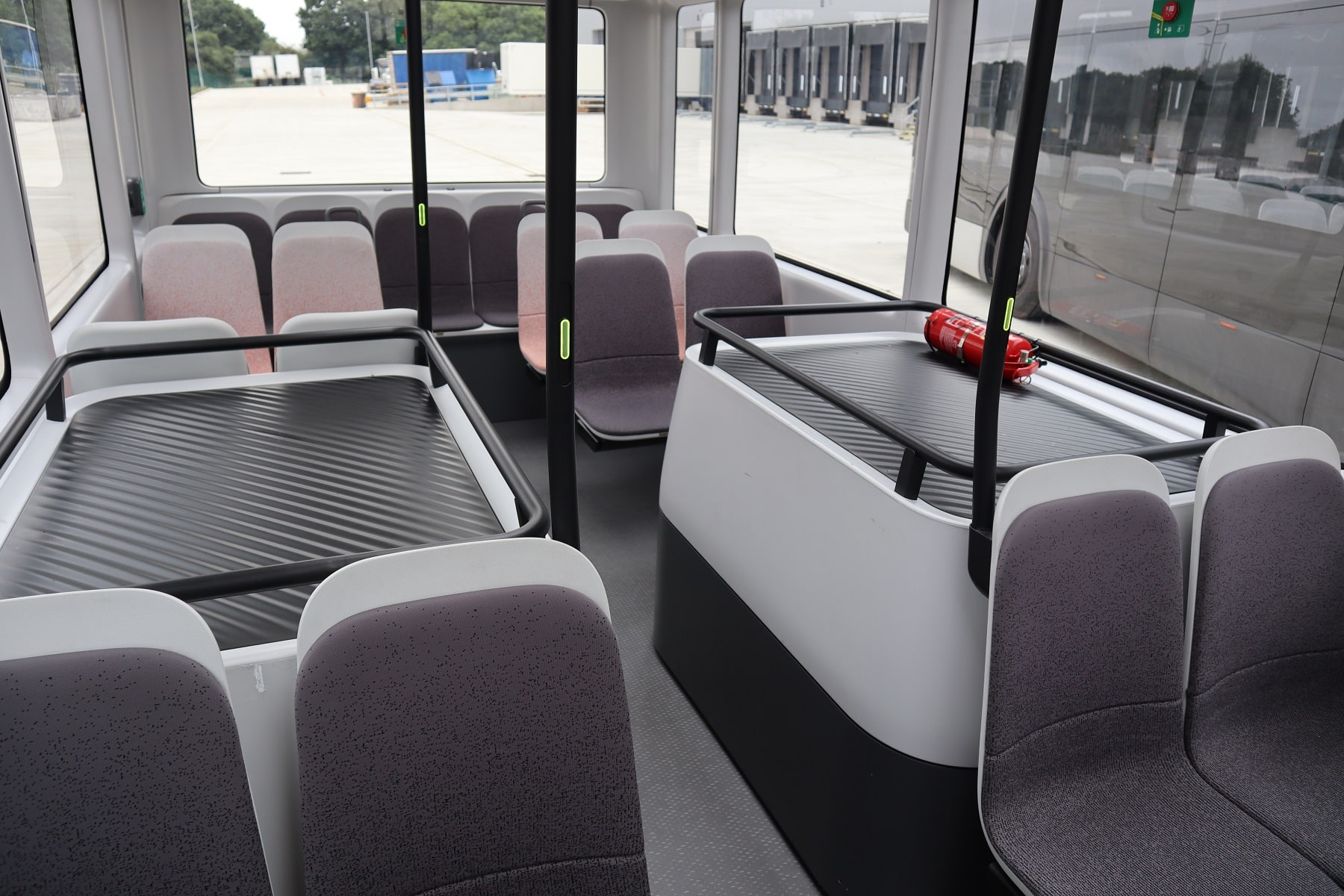
Two- and three-door layouts are possible because of the low floor, with the latter key to Arrival’s plan to offer the bus in continental Europe.
A glazed roof is fitted, and the vehicle comes with extensive digital displays inside and out. When combined, that, says Franck, “gives an ambience for passengers that is unlike any other bus.”
Arrival uses a polypropylene glass fibre composite in body construction, which the OEM says is stronger than steel. It cannot be painted. Instead, a colour is imbued into the composite, with the expansive exterior digital units above the window line expected to be used for destination display and branding purposes.
Simplicity is key to Arrival in bus market
Although routeone was not able to drive the Arrival bus, close exploration of the cab shows that it is perhaps the simplest on the market. A small steering wheel with stalks is above a flat dash. Many controls are via a touchscreen unit to the driver’s left, behind which on the road-registered bus is a Ticketer machine.
The cab layout will take a little getting used to for some drivers. However, Arrival has engaged with staff from at least one operator to obtain feedback on its design; visibility through the large windscreen is good and rear external vision is via cameras.
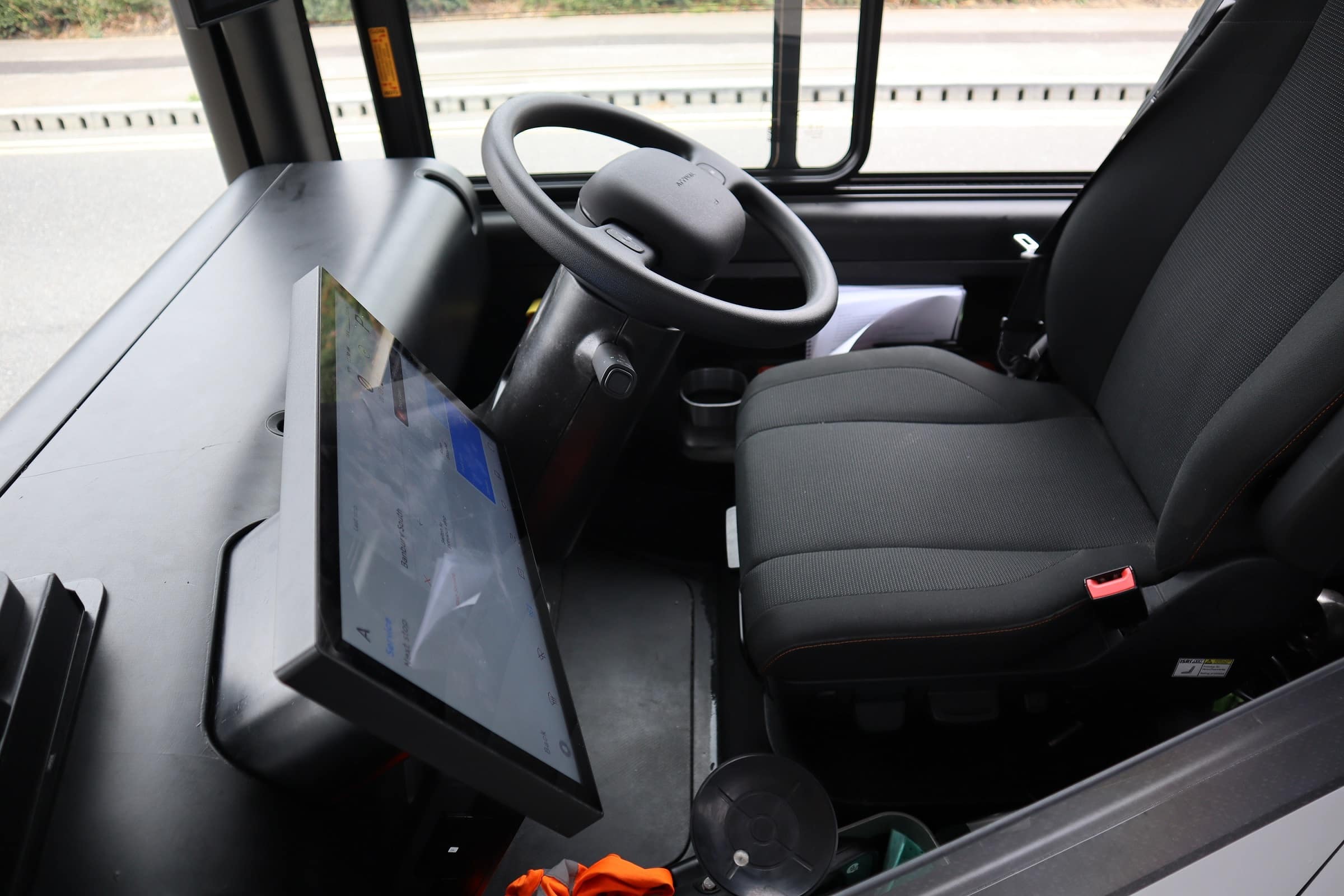
One potential issue is the layout of the door. It is a single piece plug type, and when open sits parallel to the nearside front wheel.
If the front wheels are not straight, it will not open; while the principle is solid, and the one-piece door will give an excellent view to the lower nearside, the reality of accessing an obstructed bus stop in a busy area may not agree with this door/wheel layout.
Arrival’s on-board software can utilise an API to export data to a third-party monitoring system of the customer’s choice, if required.
Heavy-duty driveline leaves no durability worries
Arrival’s standard 100kW motor is shared with its van product. The mounting arrangement in the bus is unusual. Two motors are fitted to each drive wheel, which are shod with ‘super single’ tyres.
While four motors on a battery-electric bus may sound extravagant, the units themselves are compact. They are combined with single wheels to reduce saloon intrusion. An Arrival spokesperson says that four motors are utilised to assure durability, adding that while they may be overkill for normal use, starting with a heavy load on a rising gradient requires “a huge amount of torque.”
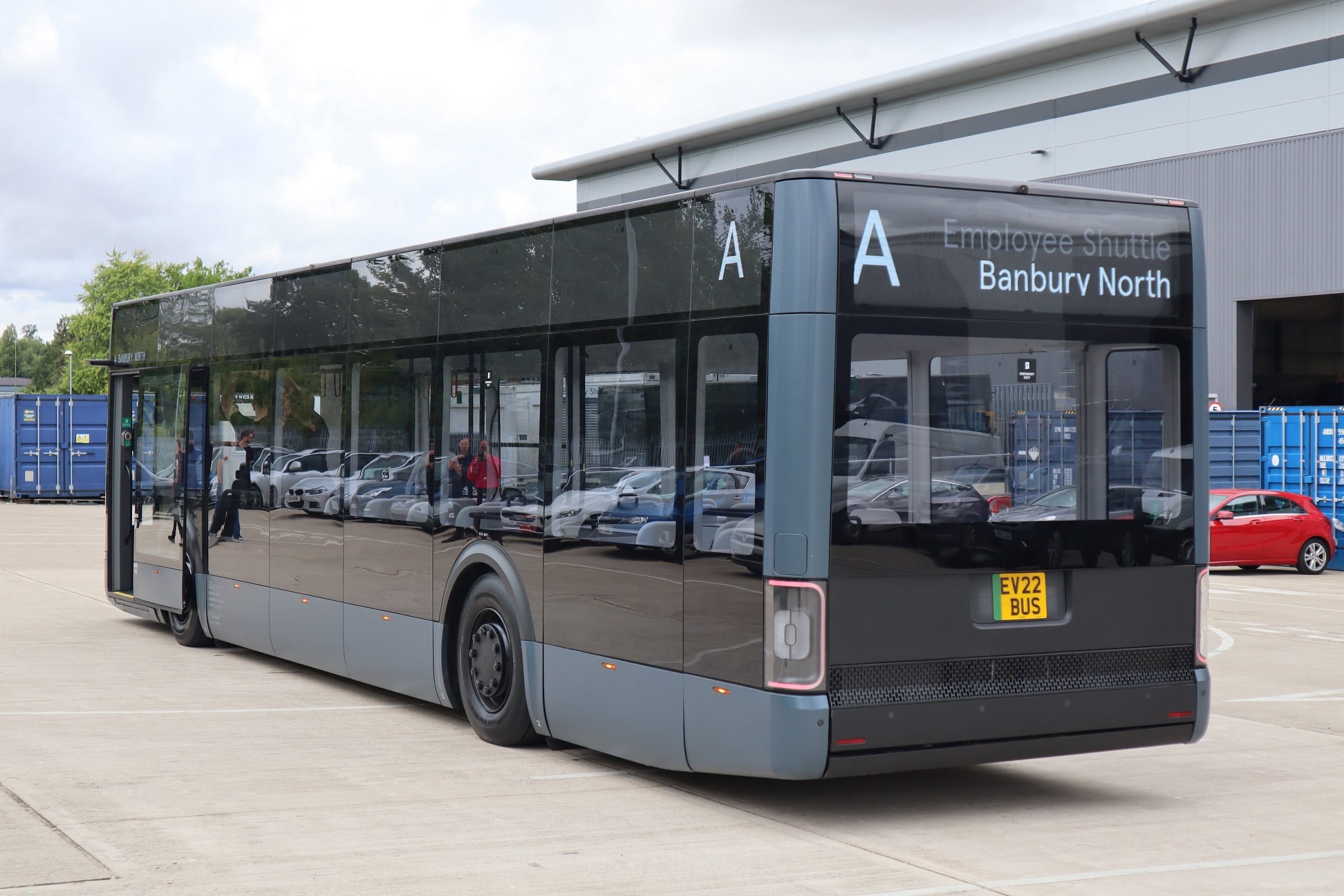
Operators concerned about the potential for drivers to take advantage of the driveline’s capability in ordinary circumstances need not be. Arrival limits acceleration – not torque delivery – and it says that the bus will gain speed at no more than 1m/s2.
311kW/h of energy storage is fitted as standard. That is less than in many other battery-electric buses – significantly so, in some cases – but Arrival says it forms part of its strategy to major on efficiency and low weight to minimise consumption.
The OEM is coy about actual usage figures and says that it continues to work on the platform to reduce them further. The powertrain “is pretty lean” already, adds a spokesperson, so Arrival is now working to optimise low voltage auxiliary components. However, it says that mass is the biggest key to efficiency and range, and that much work has gone into creating an optimal balance of the three.
The 12m, bus has a claimed ULW of 10,500kg, which is significantly lower than most competitors. GVW is 17,000kg. Arrival describes unnecessary batteries as “expensive ballast,” and part of its strategy is to tailor the bus to buyers’ requirements, which could involve less energy storage being fitted.
It is amenable to opportunity charging, although Franck believes that inherent energy efficiency will permit most duties to be completed using overnight charging via a DC CCS2 connector.
Road use ‘a significant milestone’ for Arrival bus
A ride on the Arrival bus showed it to deliver what is expected of battery-electric models: A superior travelling environment to a diesel, which in this case is furthered by expansive glazing and a light-coloured, welcoming interior. Seats are cantilevered, which the OEM says is based on operator feedback and is in place to speed cleaning.
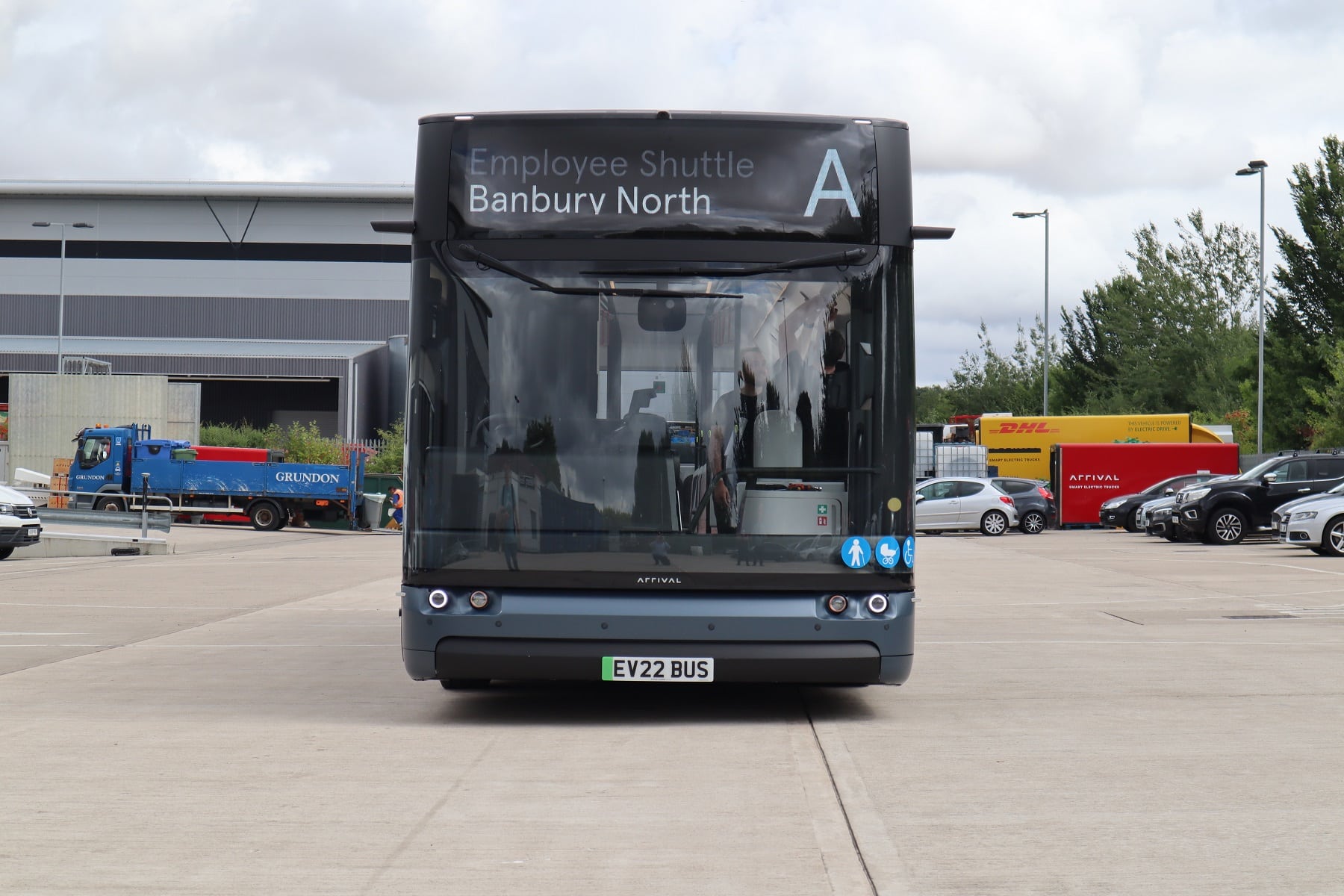
The Arrival bus is a revolutionary product that, if it does what the manufacturer says, will introduce a new dimension to the UK market.
The question is when that might be. Founder and CEO Denis Sverdlov recently told investors that further investment in the bus will come when the company secures additional capital.
There is no definite timeline on when that will happen, but Arrival will operate in a “downscaled manner” through to at least 2023.
However, certification and the beginning of on-road trials still represents “a major milestone,” says Franck. Carrying passengers will enable the OEM to gather more feedback and allow it to define areas that need further attention ahead of production. Both Arrival and First Bus have reaffirmed their intent to work together in the future after the operator had initially planned to deploy Arrival vehicles via successful Zero Emission Bus Regional Areas funding bids in England.
Opportunity to examine the Arrival product in the metal shows that it has a lot in its favour. Avinash modestly says that the OEM “looked to design the best bus ever” when it set out on its journey in passenger transport.
He adds that the finished product, when it arrives, will come at an attractive price point and be appealing to passengers, operators and drivers alike. The potential for a double-decker with no lower saloon intrusion other than via the wheel arches is particularly intriguing. “We are leaving the bus in a position where we can easily revisit it,” he observes.





















